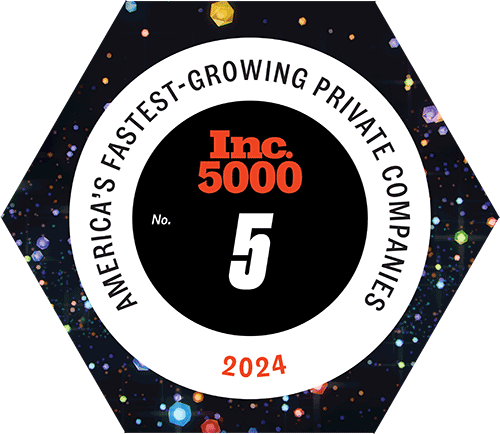Since the earliest days of the autism diagnosis, people have been trying to find an autism cure. The idea of a cure for autism is old school, formed before everyone understood it wasn’t a disease.
No successful studies have found a cause or thoroughly explained the condition. There are many reasons, including the lack of complete knowledge about the human brain, the complexity of the disorder, and the fact that every individual with autism is unique.
The most important thing to understand is that there is no cure for autism because autism is not a disease. Rather, autism spectrum disorder (ASD) is a developmental condition. ASD affects social skills, communication, behavior, and a person’s ability to relate. It results from brain development differences, which accompany many symptoms. These symptoms exist on a “spectrum,” from barely noticeable behavioral challenges to severe setbacks that make common tasks seem impossible. There is no one-size-fits-all approach to treating the condition. There is no cure. The only way to successfully manage is by care and compassion.
At ABA Centers of Tennessee, we are committed to staying informed and updated with the science surrounding autism and best practices for care. The following discusses the current facts about autism research and why focusing on an autism cure doesn’t help.
Are There Causes of Autism?
Compiling all the theories about what causes autism and its spectrum of behaviors is challenging. Consider the behavioral range demonstrated by those diagnosed with ASD. While one neurodivergent person might be non-verbal, another may have trouble merely communicating clearly. No precise answer exists to what causes autism due to the complexities and varieties of the experiences. We have assembled some common reasons that may contribute to the condition in children and newborns.
Heredity: Autism IS highly heritable, with studies of twins showing that genetic inheritance plays a large part in whether a child will be born prone to autism. The reason why genetics is considered the primary source of autism is because the heritability of ASD is anywhere from 60-90 percent.
Genetic Mutations: It is not as simple as saying that autism runs in the family. There are times autism manifests with no family history. Some scientists believe this occurs due to a mutation in the father’s sperm or the mother’s eggs. There is evidence to support this theory; studies show the chances of having a child on the spectrum increase with the father’s age, meaning the sperm has had more time to alter genetically throughout a man’s life.
Post-natal Factors: Many have tried linking post-natal factors, such as vaccinations, autoimmune disorders, and gastrointestinal problems, as causes of autism in a child that would have otherwise avoided the condition. Many of these theories thrive from the prevalence of falsified or misunderstood information found online. The majority of this “evidence” is anecdotal and not formally verified.
The Environment: There are theories that environmental factors contribute greatly to causing autism. Many sources have been researched for the condition, from metals (like mercury or lead) to pesticides to plastics. Potential pre-natal factors include diabetes, psychiatric drug use, and hypoxia (lack of oxygen) induced by sleep apnea during pregnancy.
Anything Close to an Autism Cure?
We already discussed why searching for an autism cure is counterproductive. It is a condition affecting various brain areas, not a disease, and the recipe for successful management is time and therapy. Fixation on the search for a cure for autism is offensive to some people, as it can imply there is something wrong or broken.
We understand that autism occurs due to atypical brain development. We currently know of over 1000 genes that interact in some way with autism. Some of the genes that show evidence of autism interaction include:
- SHANK3: This gene is the leading candidate for autism association. Located on chromosome 22, it codes for a protein that forms and maintains synapses (the connections between neurons in the brain).
- NRXN1: This gene codes for a protein that is involved in the formation of synapses.
- CHD8: This gene helps to regulate gene expression and plays a role in brain development.
- TSC1 and TSC2: These genes are involved in the regulation of cell growth and division. Mutations in these genes can lead to Tuberous Sclerosis.
- CNTNAP2: This gene helps form synapses and develop language and communication skills.
Mutations in all the genes listed above have associations with an increased risk of autism.
Although experts know the correlation between these genes and others with autism, genetic research is new. What is the precise correlation, how does it manifest, and how changing one or another gene alters development is unknown. In addition, the complication of environmental factors may change gene expression. Again, there is no autism cure. While new research is getting closer and closer to understanding the condition’s roots, the secret potion for preventing autism does not yet exist.
ABA Therapy for Autism
While there is no cure, the most effective therapy for autism remains Applied Behavior Analysis (ABA). ABA teaches individuals with autism new skills and behaviors that can help them in their relationships and career. ABA therapy breaks down skills and behaviors into concentrated, manageable steps. The therapist then uses positive reinforcement to reward the client for completing each step, reinforcing the behavior and encouraging them to continue practicing the skill.
ABA is the gold standard for autism care due to extensive research and peer review. ABA therapy helps improve communication, social skills, and behavior in individuals with autism while reducing challenging behaviors such as aggression and self-injury.
ABA Centers of Tennessee and Autism Treatment
No matter where your child is on the spectrum, we are here to provide them with the skills they need to excel. Our board-certified ABA experts will craft all therapy plans for your child’s needs. With positive reinforcement and play therapy, your child can learn healthy coping mechanisms to make them happier, self-actualized, and prepared for adulthood.
For more information about what we offer, call (844) 423 – 9483 or reach out on our website and let’s work together toward a brighter, autism-friendly future.






